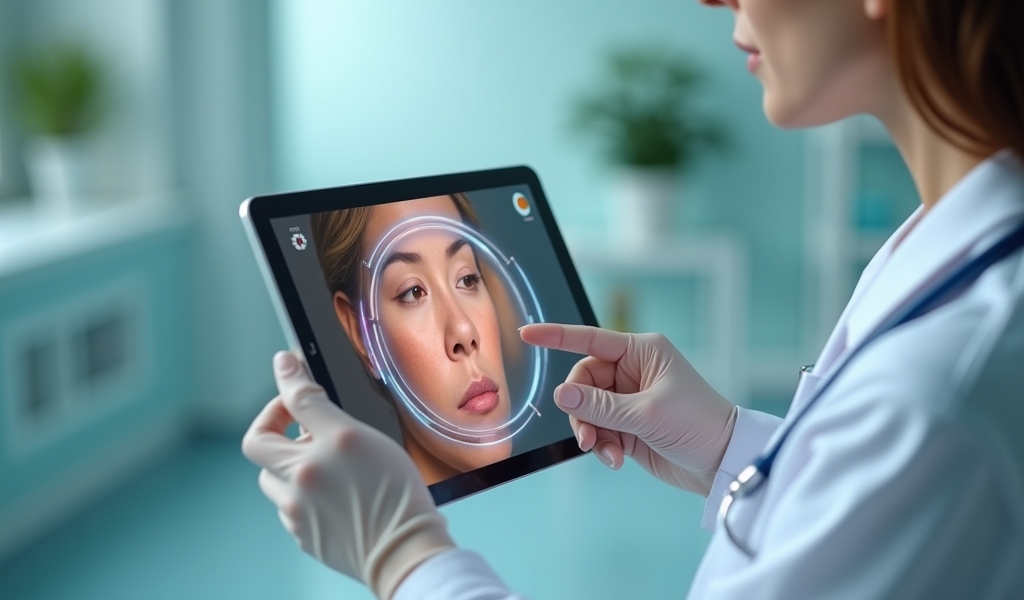Overview
Online skin infection treatment offers five expert home solutions: proper hygiene protocols, over-the-counter antimicrobials, scientifically-backed natural remedies, dietary adjustments to support healing, and digital dermatology consultations. While mild to moderate skin infections can be effectively managed at home with these approaches, patients should seek immediate medical attention for severe symptoms like rapidly spreading redness, fever, significant pain, or infections that worsen after 48 hours of home treatment.
Table of Contents
- Introduction
- Understanding Skin Infections
- Expert Solution #1: Proper Hygiene Protocols
- Expert Solution #2: Over-the-Counter Antimicrobial Treatments
- Expert Solution #3: Natural Remedies with Scientific Backing
- Expert Solution #4: Dietary Adjustments to Support Skin Healing
- Expert Solution #5: Digital Dermatology Consultations
- Monitoring Progress and Prevention
- Conclusion
- Frequently Asked Questions
Introduction
Skin infections affect millions of Americans each year, ranging from mild irritations to more serious conditions requiring medical intervention. Whether it’s the itchy discomfort of athlete’s foot, the painful bumps of folliculitis, or the spreading redness of cellulitis, these conditions can significantly impact our daily lives and self-confidence.
In recent years, we’ve witnessed a dramatic shift toward seeking online skin infection treatment. This trend, accelerated by the pandemic but sustained by convenience and accessibility, has revolutionized how we approach skin health. At Dr. Telx, we’ve observed that many common skin infections can be effectively managed at home with the right guidance and treatments.
While some skin conditions absolutely require in-person medical care, many mild to moderate infections can be successfully treated through a combination of at-home remedies and virtual medical guidance. Let’s explore effective solutions that combine medical expertise with the comfort and convenience of your home.
Understanding Skin Infections
Before diving into treatment options, it’s essential to recognize what type of skin infection you might be dealing with:
Bacterial infections include impetigo, cellulitis, and folliculitis. These typically present as red, swollen areas that may be warm to the touch, sometimes with pus or yellow crusting.
Fungal infections like ringworm, athlete’s foot, and yeast infections often cause red, itchy rashes with defined borders, sometimes with scaling or peeling skin.
Viral infections such as herpes simplex, shingles, or warts have distinctive presentations ranging from fluid-filled blisters to raised growths on the skin.
Seek immediate medical attention if you experience:
- Rapidly spreading redness
- Fever or chills
- Significant pain
- Pus or drainage
- Blisters around the eyes, nose, or mouth
- Symptoms that worsen after 48 hours of home treatment
For mild to moderate symptoms without these warning signs, consider the following expert-recommended home solutions for online skin infection treatment.

Expert Solution #1: Proper Hygiene Protocols
The foundation of treating any skin infection begins with proper cleansing:
For bacterial infections, gently wash the affected area 2-3 times daily with antibacterial soap and warm water. Avoid scrubbing, which can irritate the skin and potentially spread the infection. Pat the area dry with a clean towel – never share towels when dealing with an infection.
For fungal infections, keep the area clean and dry. After washing, ensure complete drying, as fungi thrive in moist environments. Change socks, underwear, and workout clothes immediately after exercise.
Use separate washcloths and towels for infected areas to prevent spreading the infection to other body parts or household members. Launder these items in hot water with color-safe bleach if possible.
Maintaining proper hygiene is crucial for those with recurring conditions like dermatitis. Online dermatitis treatment often begins with establishing proper cleansing routines tailored to your specific condition.
Expert Solution #2: Over-the-Counter Antimicrobial Treatments
The right OTC treatment depends on the type of infection:
For bacterial infections: Consider products containing benzalkonium chloride or bacitracin. Neosporin and Polysporin are effective triple-antibiotic ointments that create a protective barrier while fighting bacteria.
For fungal infections: Clotrimazole (Lotrimin), miconazole (Micatin), or terbinafine (Lamisil) are effective antifungal agents. These come in cream, powder, or spray forms. For persistent athlete’s foot or nail fungus, look for solutions with undecylenic acid for more powerful treatment.
For viral infections: Products containing docosanol (Abreva) can help with cold sores by shortening healing time. For warts, salicylic acid treatments gradually remove infected tissue.
Always follow package directions regarding application frequency and duration. Most treatments require consistent application for 1-2 weeks, even if symptoms improve sooner. For persistent conditions like jock itch, online treatment for jock itch may include prescription-strength antifungals that are more effective than OTC options.
According to the American Academy of Dermatology, antimicrobial soaps can be beneficial for certain skin infections when used appropriately as part of a complete treatment plan.
Expert Solution #3: Natural Remedies with Scientific Backing
Several natural remedies have demonstrated antimicrobial properties in scientific studies:
Tea Tree Oil: This essential oil has proven antifungal and antibacterial properties. Dilute it to a 5% solution with a carrier oil like coconut oil before applying to the affected area twice daily. Never use undiluted tea tree oil, as it can cause skin irritation.
Manuka Honey: Medical-grade honey creates an antimicrobial barrier that promotes healing while preventing infection. Apply a thin layer to the affected area and cover with a clean bandage. This is particularly effective for minor bacterial infections.
Garlic Extract: Studies show garlic has antimicrobial properties against many pathogens. Commercial garlic extracts or creams can be applied to fungal infections twice daily.
Coconut Oil: Its lauric acid content makes it naturally antimicrobial, particularly against certain fungi. Apply virgin coconut oil to affected areas 2-3 times daily for mild fungal infections.
While these natural options can be effective, they typically work more slowly than pharmaceutical options and are best for mild infections or as complementary treatments.
Research published in the Journal of Medicinal Food confirms that certain natural compounds can have significant antimicrobial effects against common skin pathogens when used correctly.
Expert Solution #4: Dietary Adjustments to Support Skin Healing
What you eat directly impacts your skin’s ability to fight infection and repair itself:
Increase protein intake: Your skin needs protein to rebuild damaged tissue. Focus on lean sources like chicken, fish, beans, and legumes.
Consume vitamin C-rich foods: Vitamin C is essential for collagen production and immune function. Citrus fruits, bell peppers, and strawberries are excellent sources.
Add zinc-containing foods: Zinc accelerates wound healing and supports immune function. Oysters, beef, pumpkin seeds, and lentils are rich in this mineral.
Include probiotic foods: Yogurt, kefir, and fermented vegetables support your microbiome, which plays a role in skin defense.
Stay well-hydrated: Aim for at least 8-10 glasses of water daily to support detoxification and tissue repair processes.
Reducing sugar and processed foods can also help, as high sugar consumption may suppress immune function and exacerbate inflammation. Those dealing with eczema may find that dietary adjustments are an essential component of their online eczema treatment plan, as food sensitivities can trigger flares in many patients.

Expert Solution #5: Digital Dermatology Consultations
Virtual dermatology visits have revolutionized online skin infection treatment:
At Dr. Telx, our telehealth consultations connect you with board-certified medical professionals who can visually examine your skin condition, discuss symptoms, and provide personalized treatment plans without the need for in-person visits.
To prepare for your virtual appointment:
- Take clear, well-lit photos of the affected area
- Make notes about when symptoms started and what treatments you’ve tried
- Have your medical history and medication list ready
- Prepare questions about treatment options and prevention
After your consultation, you’ll receive a comprehensive treatment plan that may include prescription medications (delivered to your door), specific home care instructions, and follow-up guidance.
The Mayo Clinic notes that telehealth has become an increasingly important tool for managing various skin conditions, providing quality care while reducing barriers to access.
Monitoring Progress and Prevention
Most minor skin infections should show improvement within 3-5 days of consistent treatment. Create a photo diary to objectively track changes in the appearance of the infection.
Warning signs that indicate you need in-person care include:
- Increased pain, swelling, or redness
- Development of streaks radiating from the infection
- Appearance of new lesions despite treatment
- Fever or general malaise
- No improvement after 5-7 days of home treatment
To prevent recurrence:
- Complete the full course of any prescribed treatment
- Maintain excellent hygiene, especially in communal settings
- Avoid sharing personal items like towels or razors
- Keep skin clean and dry, especially in moisture-prone areas
- Consider preventative measures like antifungal powders for those prone to fungal infections
Conclusion
Managing skin infections effectively often requires a multi-faceted approach combining proper hygiene, appropriate antimicrobial treatments, supportive natural remedies, nutrition, and professional guidance when needed.
The five expert solutions we’ve outlined provide a comprehensive approach to online skin infection treatment from the comfort of your home. However, remember that while home treatments are convenient and often effective, they should be approached with knowledge and caution.
At Dr. Telx, we’re committed to empowering you with both the information and professional support needed to address skin concerns effectively. Our virtual care team is available to guide you through diagnosis, treatment, and prevention of future infections—ensuring that quality dermatological care is accessible wherever you are.
Remember, consistent application of the right treatments, coupled with expert guidance when needed, is your best path to healthy, infection-free skin. Online skin infection treatment has revolutionized how we approach skin health, making quality care more accessible than ever before.
Frequently Asked Questions
How can I tell if my skin infection requires emergency medical attention?
Seek immediate medical care if you notice rapidly spreading redness, red streaks extending from the infection site, fever above 100.4°F, significant pain or swelling, or if the infection is near your eyes or other sensitive areas. Also, any skin infection that doesn’t improve after 48-72 hours of home treatment should be evaluated by a healthcare professional. Online skin infection treatment is appropriate for mild to moderate cases, but severe infections need prompt in-person evaluation.
Can I treat MRSA or other antibiotic-resistant infections at home?
No, suspected MRSA (Methicillin-resistant Staphylococcus aureus) or other antibiotic-resistant infections should always be evaluated by a healthcare provider. These infections typically require special antibiotics and careful monitoring. While you wait for your appointment, keep the area clean and covered with a sterile bandage, practice good hand hygiene, and avoid sharing personal items to prevent spreading the infection.
How long should I continue treatment after my skin infection appears to be healed?
As a general rule, continue treatment for at least 48 hours after symptoms have resolved, or follow your healthcare provider’s specific instructions. Stopping treatment too early, especially with fungal infections, can lead to recurrence. For bacterial infections treated with prescription antibiotics, always complete the entire course even if symptoms improve, to prevent antibiotic resistance.
Are natural remedies as effective as pharmaceutical treatments for skin infections?
Natural remedies typically work more slowly and may be less effective than pharmaceutical options for moderate to severe infections. They work best for minor infections or as complementary treatments alongside conventional medicine. Some natural treatments like tea tree oil and manuka honey do have scientific evidence supporting their antimicrobial properties, but they shouldn’t replace appropriate medical treatment for serious infections.
How can I prevent skin infections from recurring?
Prevention strategies include maintaining good hygiene (regular handwashing and showering), keeping skin clean and dry, avoiding sharing personal items like towels or razors, wearing breathable fabrics, changing out of wet or sweaty clothes promptly, and treating any underlying skin conditions like eczema or dermatitis. For those prone to recurrent fungal infections, preventative measures might include using antifungal powders in shoes or skin folds. Regular online skin infection treatment consultations can help identify patterns and develop personalized prevention strategies.

